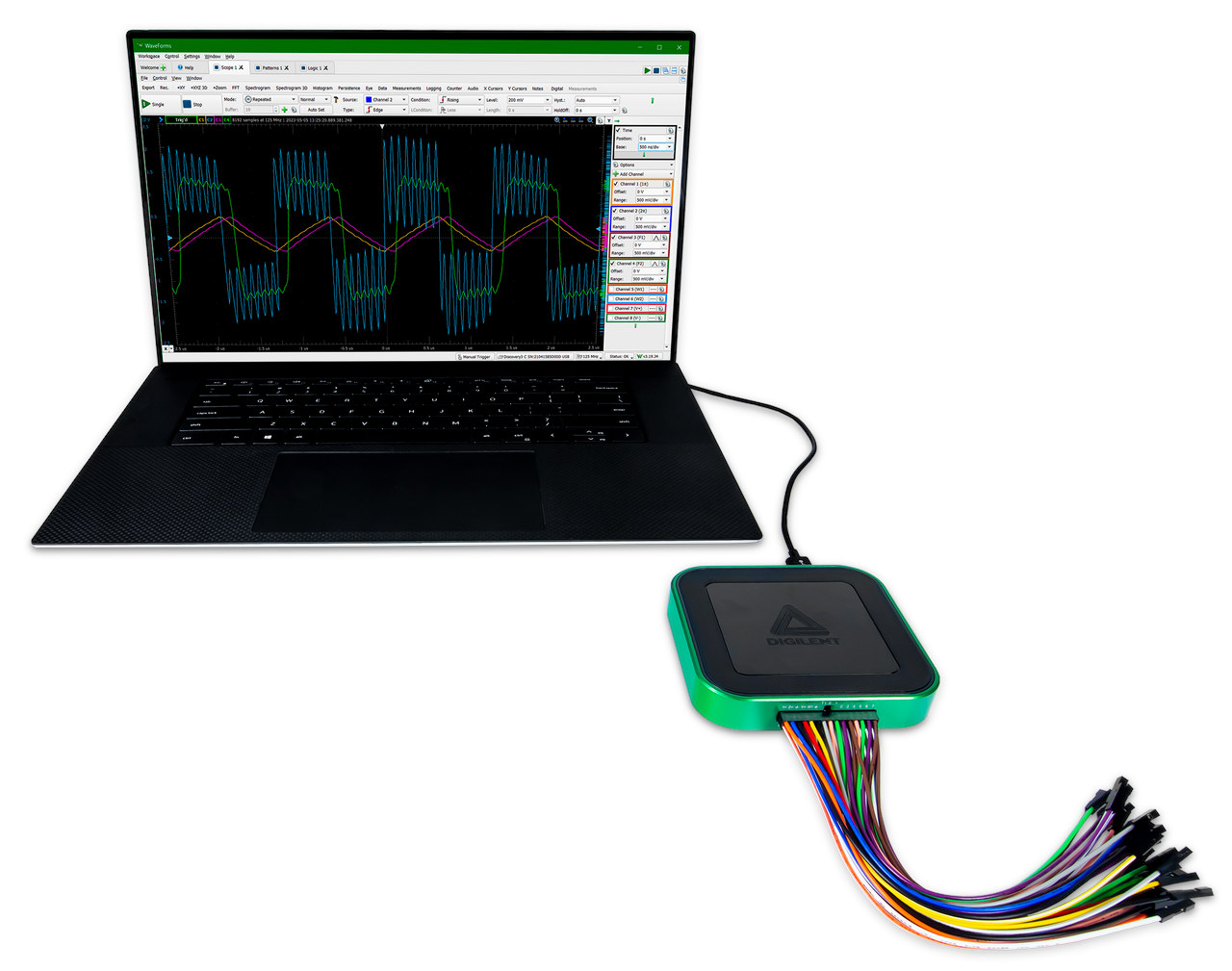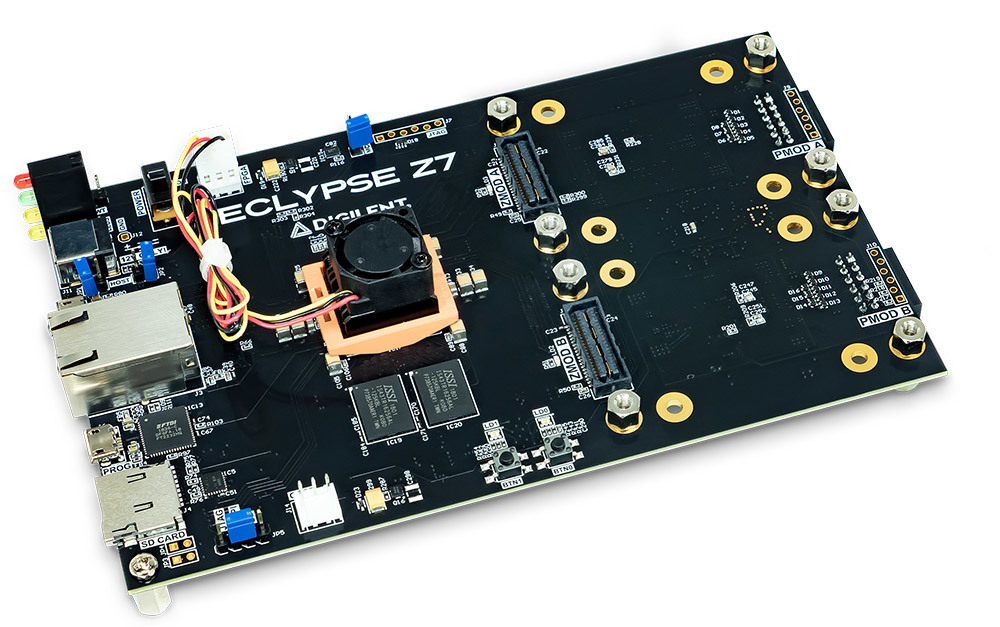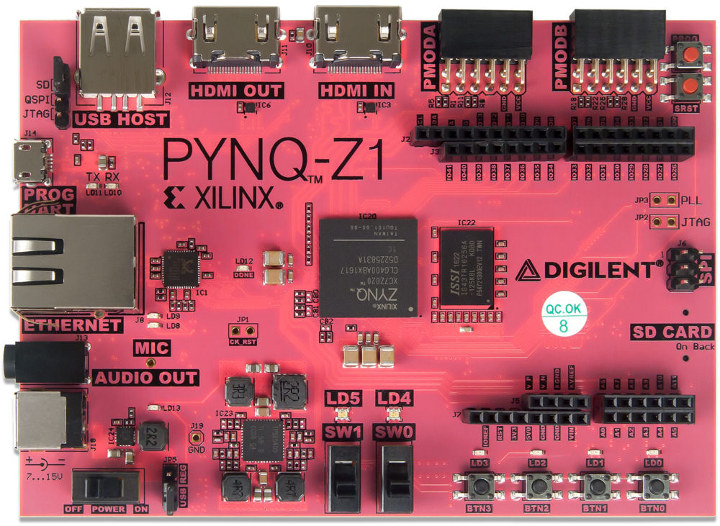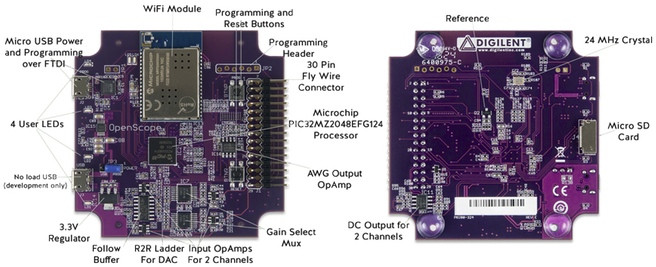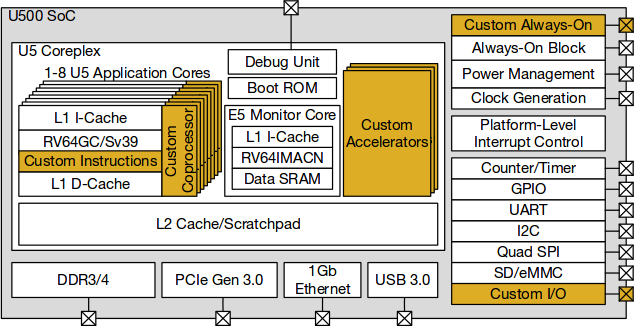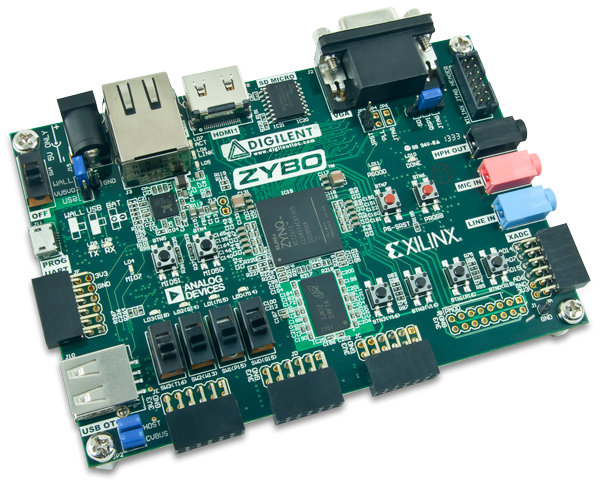Digilent Analog Discovery 3 is a USB oscilloscope with a sample rate of up to 125 MS/s, that can also be used as a waveform generator, logic analyzer, and/or a variable power supply up to 5V. Several other features are also enabled through its software and the USB-C oscilloscope can also act as a spectrum analyzer, a network analyzer, an impedance analyzer, a protocol analyzer, a data logger, a voltmeter, and supports in-app scripting. Analog Discovery 3 features highlights: Xilinx FPGA-based design Host interface – USB Type-C port Oscilloscope 2x differential channels with 14-bit resolution at up to 125 MS/s per channel with a +/-25 V input range, 30+ MHz bandwidth with BNC Adapter User-configurable input filters and lock-in amplifier FFT, Spectrogram, Eye Diagram, XY Plot views, and more Arbitrary Waveform Generator 2x channels with 14-bit resolution at up to 125 MS/s per channel with a +/-5 V output range, […]
Digilent Offers 2 Zynq-Based Linux Development Boards Supporting SYZYGY Expansion
Digilent Announces SYZYGY high-speed SBCs Digilent has announced two new SBCs that are ultra-high-speed and built to be more modular than its other boards. The company, which has a great deal of experience in Pmod lower speed FPGA standards has now entered the open-source, SYZYGY high-speed standards with its Eclypse Z7 and the Genesys ZU development SBCs. Background on the Digilent Zybo FPGA SoC SBC We reported on the Zybo development board FPGA SoC from Digilent and that seems to have lead to the latest format for the Eclypse Z7. Zmod There is also a release planned for the new Zmod modules, built to work with both the Eclypse Z7 and the Genesys ZU as SYZYGY compliant expansion modules. Opal Kelly and Zmod expansion The Zmods are Opal Kelly module standard, called SYZYGY, first seen in the Opal Kelly SYZYGY Brain-1 SBC. The standard was developed to jump the gap […]
Xilinx Zynq-7020 based PYNQ-Z1 Arm + FPGA Board is Meant to be Programmed with Python
Xilinx Zynq-7000 series is a family of SoC based on Arm Cortex A9 processor coupled with FPGA fabric, and since the introduction in 2012, we’ve seen may board based on the entry-level Zynq-7010 or Zynq-7020 SoCs. Digilent PYNQ-Z1 is another Xilinx Zynq board from the company, but it does not differentiate itself by its hardware features, and instead the software part is the most interesting. The board is designed to be used with PYNQ, a new open-source framework that enables embedded programmers to exploit the capabilities of Xilinx Zynq SoCs without having to design programmable logic circuits, relying instead on Python programming. Digilent PYNQ-Z1 hardware specifications: SoC – Xilinx Zynq-7020 (XC7Z020-1CLG400C) dual core Arm Cortex-A9 processor with FPGA with 1.3 M reconfigurable gates System Memory – 512MB DDR3 Storage – Micro SD card slot, 16MB QSPI Flash with factory programmed globally unique identifier (48-bit EUI-48/64 compatible). Video – HDMI In […]
$79 Digilent OpenScope Open Source Multi-function Programmable Instrument Works over USB and WiFi (Crowdfunding)
Digilent OpenScope is an open source, portable, multi-function programmable instrument used for capturing, visualizing, and controlling analog and digital signals, that works with your smartphone or computer over USB or WiFi, and it can also be used in standalone mode as a development board, like you would use an Arduino or Raspberry Pi board. OpenScope MZ key features and specifications: MCU – Microchip PIC32 MZ (MZ2048EFG124) MIPS Warrior M-class micro-controller @ up to 200 MHz with 2048KB flash, 512 KB RAM External Storage – micro SD slot Wireless Connectivity – WiFi module USB – 1x micro USB for power and programming over FTDI Programming / Debugging – micro USB port, programming header Expansion – 30-pin Fly Wire connector with: 2x scope channels with 12 bits @ 2 MHz bandwidth and up to 6.25MS/s sampling rate 1x function generator output with 1 MHz bandwidth and up to 10MS/s update rate 10x […]
SiFive Introduces Freedom U500 and E500 Open Source RISC-V SoCs
Open source used to be a software thing, with the hardware design being kept secret for fear of being copied, but companies such as Texas Instruments realized that from a silicon vendor perspective it would make perfect sense to release open source hardware designs with full schematics, Gerber files and SoM, to allow smaller companies and hobbyists, as well as the education market, normally not having the options to go through standard sales channels and the FAE (Field Application Engineer) support, to experiment with the platform and potentially come up with commercial products. That’s exactly what they did with the Beagleboard community, but there’s still an element that’s closed source, albeit documented: the processor itself. But this could change soon, as SiFive, a startup founded by the creators of the free and open RISC-V architecture, has announced two open source SoCs with Freedom U500 processor and Freedom E300 micro-controller. Freedom […]
ZYBO Development Board Features Xilinx Zynq-7010 FPGA + ARM SoC, VGA and HDMI Output
Digilent ZYBO (ZYnq BOard) is a low cost development board powered by Xilinq Zynq-7010 SoC featuring a dual core ARM Cortex A9 processor and FPGA fabric. It’s using the same SoC as MicroZed, is in the same price range as it costs $189 ($125 for academic purpose), but adds video interfaces, namely bi-directional HDMI and VGA, that are not available in MicroZed. It does come however with less RAM (512 MB vs 1GB). Digilent ZYBO specifications: SoC – Xilinx ZYNQ XC7Z010-1CLG400C dual core Cortex A9 processor + FPGA with 28K Logic Cells (~430K ASIC gates). System Memory – 512MB x32 DDR3 w/ 1050Mbps bandwidth Storage – 128Mb Serial Flash w/ QSPI interface, MicroSD slot for Linux file system, EEPROM programmed with 48-bit globally unique EUI-48/64™ compatible identifier. Video I/O – Dual-role (Source/Sink) HDMI port, 16-bits per pixel VGA output port Audio I/O – Audio codec with headphone out, microphone and […]


